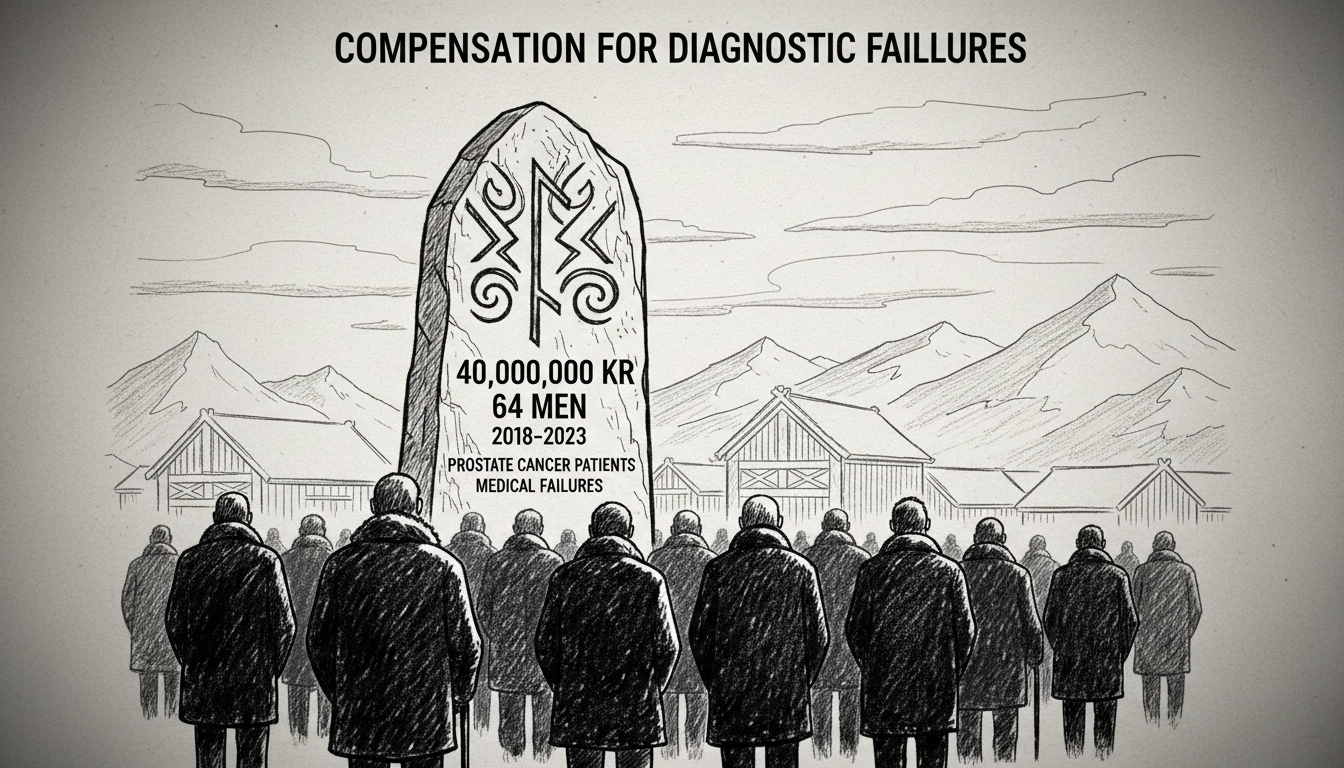Norwegian health authorities have paid nearly 40 million kroner in compensation to prostate cancer patients over the past five years. The Norwegian System of Patient Injury Compensation (NPE) approved 64 cases where men's prostate cancer was not detected or properly followed up by the healthcare system.
Prostate cancer remains Norway's most common cancer form, with over 5,000 new cases diagnosed annually. NPE director Kristin Cordt-Hansen described the situation as extremely serious. Four patients died due to treatment failures, while 46 others experienced reduced life expectancy because of diagnostic delays.
In three out of four compensation cases, investigators found failures in the diagnostic process. Many cases involved general practitioners who should have referred patients for further testing based on elevated PSA levels. PSA (prostate-specific antigen) is a protein measured through blood tests that can indicate prostate changes, including cancer.
One case involved a man in his 50s whose elevated PSA result was overlooked despite symptoms of fatigue and frequent urination. Three years later, doctors discovered he had prostate cancer that had spread to lymph nodes and bones. The delay required extensive treatment with chemotherapy, radiation, and hormones. He received nearly four million kroner in compensation.
Another man with family history of prostate cancer experienced an 18-month delay when his referral to a cancer pathway program went missing. By the time he was properly diagnosed, the cancer had spread to his lymph nodes. He received approximately 250,000 kroner.
Cordt-Hansen noted that 39 of the 64 cases involved failures at the general practitioner level. Among cases with delayed diagnosis, 39 of 48 originated with primary care doctors. She emphasized these numbers must be viewed in context of Norway's high prostate cancer incidence rates.
Daniel Ask, chairman of the Prostate Cancer Association, believes the compensation numbers reveal only a small portion of the problem. He estimates about 500 men annually receive late-stage diagnoses when the cancer has already spread, making curative treatment impossible. Ask attributes underreporting to patients lacking energy to file complaints or making formal errors in their applications.
Many cases likely involve men denied PSA testing because doctors fear overtreatment. Ask argues this concern relies on outdated knowledge. Current data from the Cancer Registry shows prostate cancer diagnosis and treatment have improved significantly, making overtreatment less problematic.
The association is raising these issues during their annual awareness campaign focusing on early detection and improved treatment. Ask emphasizes that early diagnosis saves lives and improves post-treatment quality of life. Men with hereditary risk factors should consider testing as early as age 40, particularly those with multiple family members affected by prostate, breast, or gynecological cancers potentially linked to BRCA2 gene mutations.
Approximately 40 compensation applications related to prostate cancer treatment are filed annually, with numbers remaining stable over time. Most cases involve older men, with only nine patients under age 50 among 181 recent cases.
Torgeir Hoff Skavøy, leader of the Norwegian Association for General Practice, acknowledges the diagnostic challenges. He notes prostate diagnostics have long suffered from unclear guidelines but says international changes are occurring. A pilot project planned for the Oslo area aims to use PSA testing more effectively.
Skavøy emphasizes that general practitioners follow national recommendations, though current guidelines have excluded many men from testing. Over 600,000 PSA tests are conducted annually in Norway, but many target the wrong patients. The planned changes should help healthcare services become more targeted and accurate in prostate cancer diagnosis.
This situation highlights the delicate balance healthcare providers face between preventing overtreatment and ensuring timely cancer detection. As diagnostic methods improve and guidelines evolve, patients and doctors must work together to ensure concerning symptoms receive appropriate attention.

